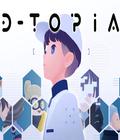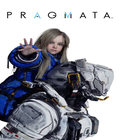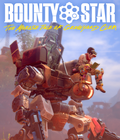Announced at TGS 2025, D-topia is a narrative-focused exploration game that centers around the question of, "What is happiness?" According to the developers, the goal was to "create a game that people can play when they finally get home after a long day at work and want to relax and enjoy the rest of their day." Based on the demo, the team at Marumittu Games seems to be meeting that goal, but there is more to D-topia's story than what we see on the surface.
D-topia is set in a future world where computers and AI have been given the responsibility of caring for the human race. Humans do some minor "work" by solving puzzles, but the bulk of their time appears to be relaxing and conversing with others in the utopia that is the city of D-topia. D-topia is the crowning jewel of the Utopia Project, a perfect city for all who are chosen to live there.
As a new resident, you are assigned the role of Facilitator. It's your job to solve problems for residents whose "perfect life" isn't so perfect. We're told that you'll have to make decisions that weigh what's best for the residents as a whole against what's best for an individual resident. That focus on choice is ultimately going to be at the core of D-topia's gameplay and its overall story.
The TGS demo let me briefly explore the city of D-topia as "Resident 46." As I wandered the halls of the city, it struck me that everyone I spoke to was friendly and outgoing, but the game identified every single one as "resident." Just like my character, no one seemed to have an actual name. Apartments in the residential district were also assigned by number.
Gameplay was focused on exploring the world and talking to people, but that changed a bit after I arrived at "work." I use work in quotes because my character didn't have a job in the traditional sense. Instead, when I went to the factory, I was simply charged with solving some basic number puzzles.
It was after Number 46 finished "working" that the demo got interesting. Another resident, who was skating down the hallway, accidentally ran into me and dropped a memory chip. Seemingly worried about something unknown, he rushed off. I picked up the memory chip and followed, figuring the stranger would want it back.
It turns out this stranger was the first character in the game to have an actual name, Eebie. I didn't learn much from Eebie, but I think I gained his friendship before he left again.
A noise from a nearby shop led me to another named character, Tot. He was trying to buy something when one of the shop's robots broke down. Recognizing me as a Facilitator, Tot asked me to check out the "Block Side," which is another "side" of reality that residents are aware exists, but they can't see.
Switching over to the Block Side made everything look darker and more industrial. It was a far cry from the clean lines of D-topia proper. The shop robots, which appeared to float in the "normal" reality, were connected to the ground via piping in the Block Side view. There was also a rodent visible on one of the shop shelves in Block Side that wasn't visible in the normal reality.
Walking over to the damaged shop robot, I was able to fix it by solving a puzzle similar to those that I had done earlier at the factory. With the robot up and running, I returned to the normal reality, and Tot thanked me. The demo wrapped up at this point, but not before a black screen displayed the voices of patrol robots discussing an "irregularity" and commencing an investigation into Resident 46.
The slightly ominous ending is hinting that there's more to the story, which does make me wonder what the developers haven't revealed. We know D-topia is about choice and helping those in need, but how deep does the rabbit hole go? It is just about helping others, or is the utopian city not what it seems? We'll have to wait until next year to find out.
More articles about D-topia






































